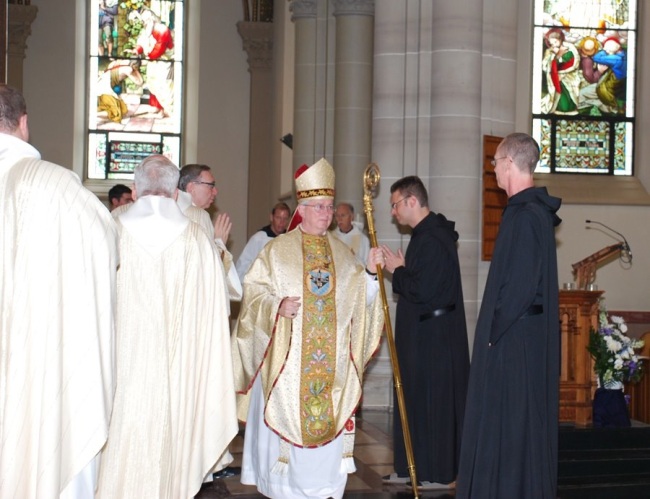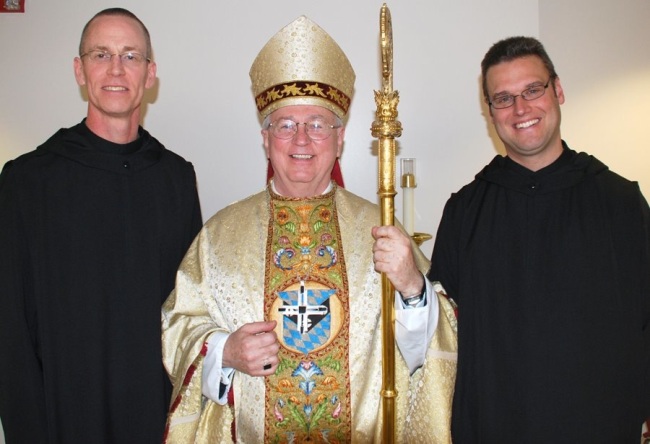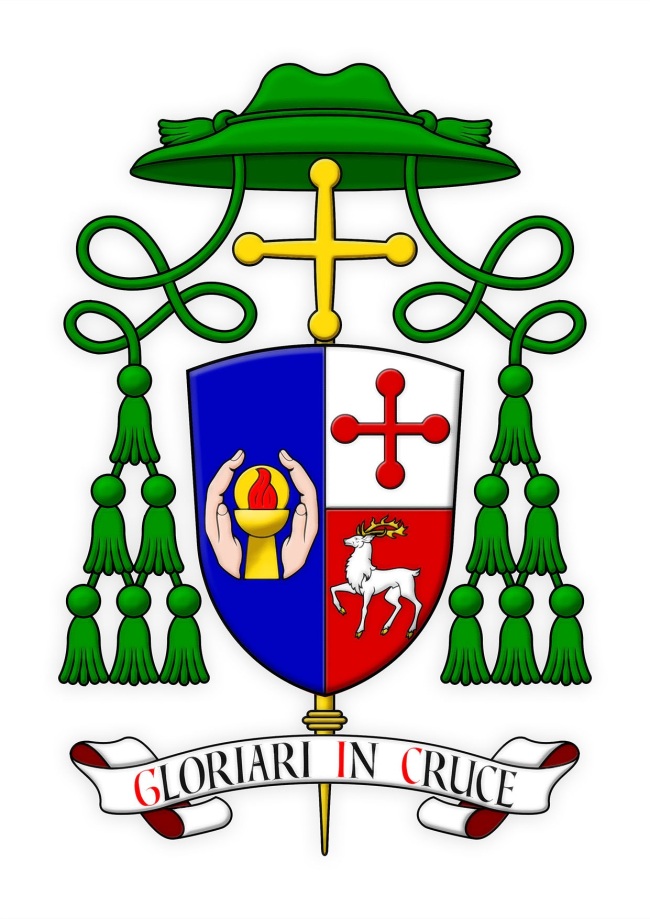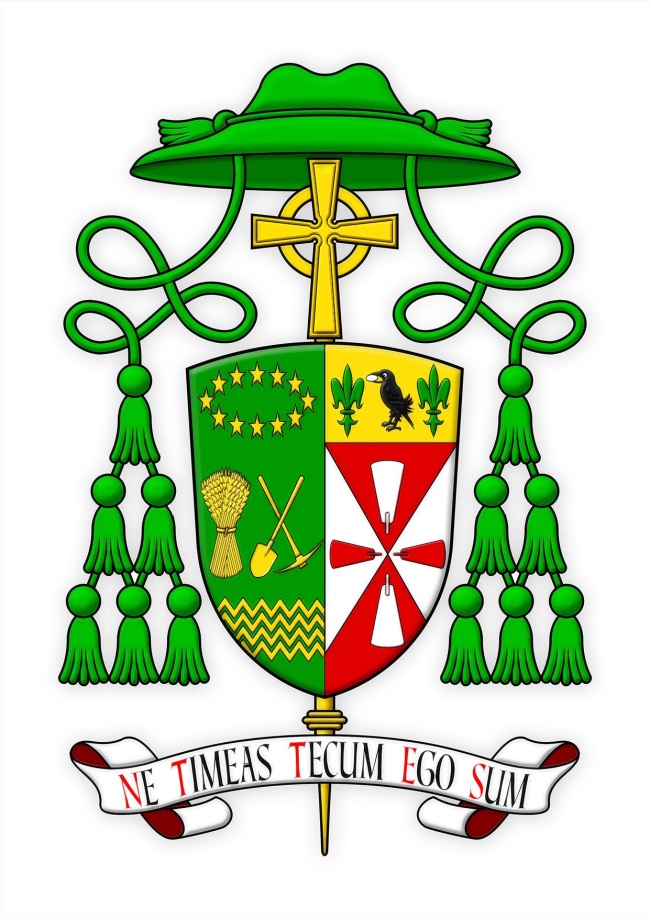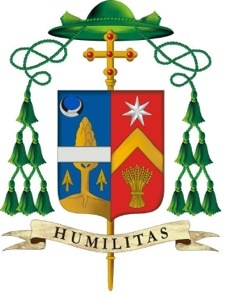Back in 2012 a priest who, like me, grew up on Long Island and who, unlike me served as a priest of the diocese of Rockville Centre and also went on to serve the U.S. Air Force as a chaplain rising to the rank of Colonel, was honored by the then Pope, Benedict XVI, with the rank of Chaplain to His Holiness. This is the lowest of the three grades of prelates in the papal household who are collectively addressed as “Monsignor” (Italian for “My Lord”). Fr. Mark Rowan contacted me and asked if I could assist him with the design of a coat of arms. I jumped at the chance to help out a fellow Long Islander as well as a chance to assist someone who was serving not only the Lord but our country. Below is the end result:
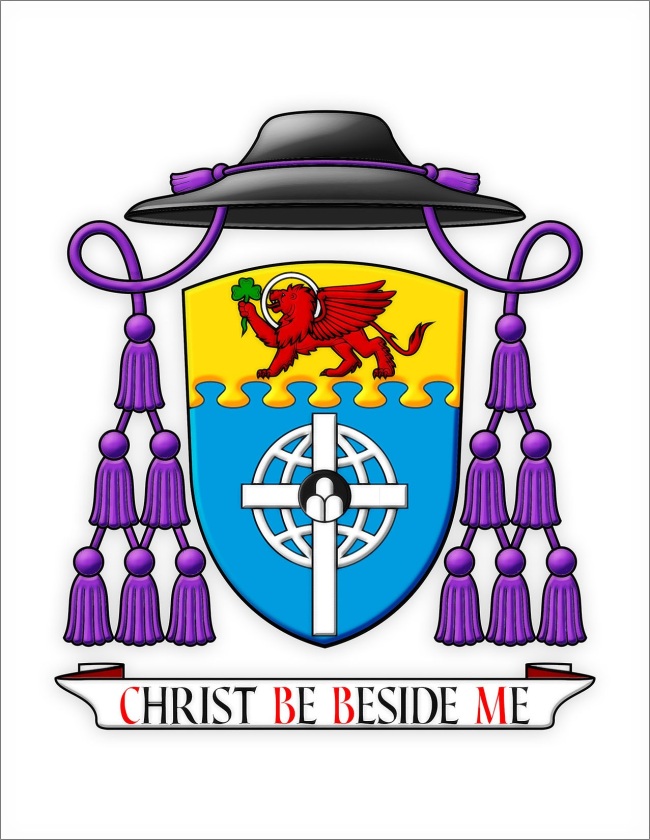
The main background of the field is a shade of blue called, in heraldry, Bleu Celeste. It is borrowed from the coat of arms of the U.S. Air Force. Obviously, it alludes to the blue of the sky. On this is the single charge of the open globe combined with a Latin cross (one where the lower arm is longer than the other three) in silver. This charge is taken from the arms of the Archdiocese for the Military Services, USA. Superimposed over this is a small black roundel, called a “pellet”. This, in turn, has three small silver hills. It is borrowed from the coat of arms of the diocese of Rockville Centre, NY. The three small hills are, in turn, taken from the arms of Pope Pius XII who founded the diocese of Rockville Centre in 1957. That diocese is composed of territory taken from the diocese of Brooklyn so the black tincture represents the marshes, which recalled to the Dutch their homeland in Breuckelen on the Vecht in the Province of Utrecht. The Dutch who settled Brooklyn at first called it “Breuck-Landt,” meaning “broken land,” or “marshland,” inasmuch as a great deal of land was broken up by patches of water.
The upper third of the shield (called the “chief”) is separated from the rest of the background by a line whose shape is referred to as “nebuly”. This type of line in heraldry is used to suggest clouds. This same dividing line is also used in the coat of arms of the U.S. Air Force. Here, along with the bleu celeste, it alludes to Msgr. Rowan’s service as a Chaplain. The bumps or nebuli are six in number. This is a reference to the fact that Msgr. Rowan has served or provided support on six different continents in the course of his service as a Chaplain and has also administered six of the seven sacraments. (The seventh sacrament, holy orders, is reserved to bishops). On the gold (or yellow) colored chief stands a red winged lion that is the symbol of his patron saint, St. Mark, the Evangelist. The lion holds, in his right front paw a green trefoil, more commonly known as a shamrock, which is the symbol of Msgr. Rowan’s Irish ancestry.
The galero, or ecclesiastical hat, is used in Church heraldry in place of the more martial helmet, mantling and crest. Originally a pilgrim’s hat it was worn and used in heraldry by Cardinals. Later, it was adopted by the lesser prelates. Eventually a system of both colors and number of tassels was devised to indicate the various ranks within the hierarchy. Msgr. Rowan’s arms use a black galero like any priest but the cords and tassels are purple indicating he is a member of the papal household. This galero indicates the bearer is a Chaplain to His Holiness according to the Motu Proprio, “Inter Multiplices” of Pope St. Pius X in 1905.
On a scroll below the shield Msgr. Rowan has chosen the motto, “Christ Be Beside Me” which is taken from the prayer known as “St. Patrick’s Breastplate”. After I completed this design and Msgr. Rowan approved the artwork was quickly and expertly executed by Mr. Sandy Turnbull of Australia. Mr. Turnbull is a member of the Australian Heraldry Society.



